This is the most extensive guide on how to start a sewing blog step by step successfully. Do you have extra-ordinary sewing skills that you want to show to the world? Do you want to make sewing as your side-hustle?
If you completely stand on all these questions and thinking about creating a sewing blog, then you are in the right place because today, I will show you all the ways and tips through which you can start a blog.
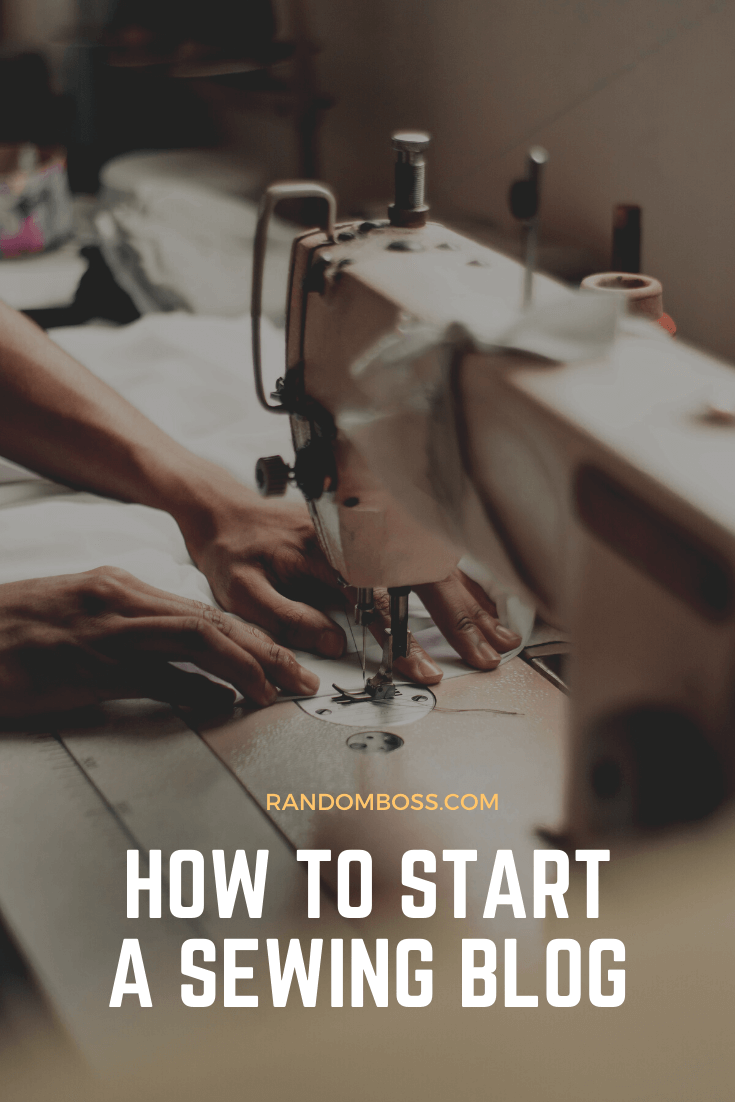
Sharing your work and seeing it getting success day by day is one of the best feelings in this world. Plus, you get to work on your own time and schedule as well.
In this blog post, I will show you the methods and things that are required to build the blogs, select the name, and attract the audience towards your blog. It can be very lucrative if you are consistent and focus on what you are doing.
What is your niche?
You have to find the answer to this question on your own but I will help you in finding it. If you are going to start a sewing account, then it is a general topic and you are fighting and making a blog in the market that has very strong competition and saturation.
So, you have to think something deeper and something specific which the people want. Do you want to make a blog of color combination? Do you like the dressmaking blog? Do you want to share your views on fashion news? Do you want to give some information about the sewing machine?
There are many options for you and you just have to select one which suits and fits you the best and you know a lot about that niche.
You have to select the best corner available in the market for you. If you try to cover all the topics in the start, you will be disappointed with yourself. You have to select something between ”general” and ”narrow”.
It means that neither can you just make a blog about sewing nor you can make a blog about something very narrow like sewing the bows.
The cons of being too broad or too narrow are that in a too broad blog, you will not be able to write on any specific topic and everything will be mixed up. On the other hand, if you go too narrow, then there will be so less content and you will be ended up with that. When you have more articles on your blog, then you can start writing content on broader topics.
1. Getting a domain name and hosting
Once you have decided on your specific niche, the next step is to decide a name for your blog. You have to do brainstorming for this because your blog name should be related to your topic and it should be small but classy.
I should not be taken before by anyone because people will find difficulty in finding your blog when they search. Your blog name should be snappy and witty.
My blog name is two words, for yours, you can go up to three words, longer than that will be harder for your visitors to remember. Maybe you can start a personal blog and go with your name or nickname on it. Very important is to choose a .com extension, it builds more trust with your readers.
What about web hosting?
The next step is to choose the best hosting site for your blog. It is the site where your blog stores its data and that’s how it is online. There are free ways to start a blog, but I don’t recommend going that route, because you will have less control and your blog will be a subdomain, plus it can be easily shut down.
The best way to start is to have paid web hosting and have full control of your blog. For a couple of bucks a month you can customize your blog the way you like and monetize and make all the profits.
Note: All free websites that offer a free way to start a blog, they will show ads to visitors and you will not make money from them.
Usually, a domain name could cost up to $18 per year, while a web host can cost up to $10 per month. I know this can be a bit much for some beginners, that’s why I have a special deal for you that you don’t want to miss.
For just $2.95 per month, you will get a free domain name with a free SSL certificate, awesome 24/7 customer support with 60% OFF on hosting. This is a deal that you don’t want to miss.
Click here to get the RandomBoss special offer.
When you open the homepage BlueHost homepage, you need to click on Get Started, and you will see the following plans.
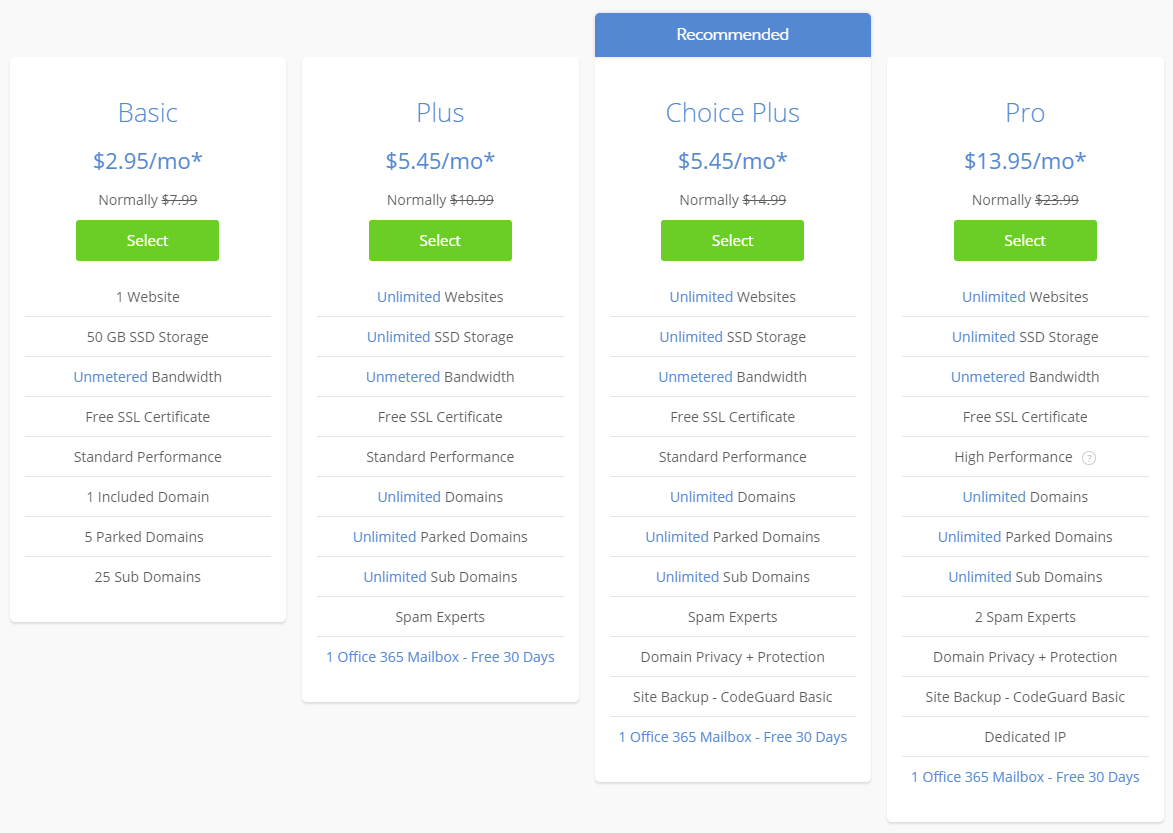
Starting with the Basic Plan
By far the best plan for starting a sewing blog is the Basic plan on BlueHost. You get 50 GB of SSD storage, and this is perfect until you reach 25k monthly visits on your blog.
Once you reach that, you can always upgrade to a bigger plan with no issues. The 36-month deal will give you the best price, but if you are on a budget, you can choose 1 or 2 years of BlueHost hosting.
The thing I love mostly about BlueHost is that they give their customers a 30-day money-back guarantee, which is a phenomenal deal when you are first starting a blog.
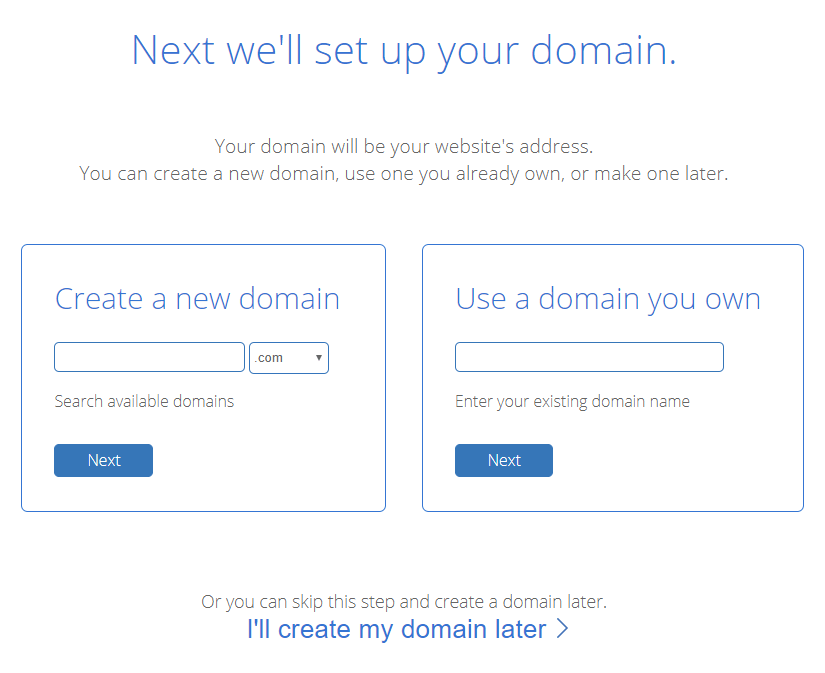
You need to create a domain on this step, or you can choose to skip and add it later.
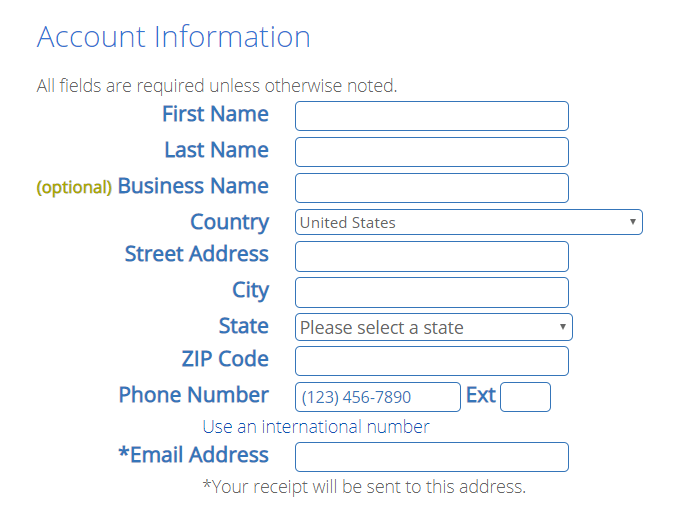
In this step, you need to fill all your personal information, plus if you already selected a domain name it is a good idea to get domain privacy. It will avoid you some calls from people that might wanna contact you and offer you services.
But no worries, you can always upgrade to it once you get some traffic on your blog.
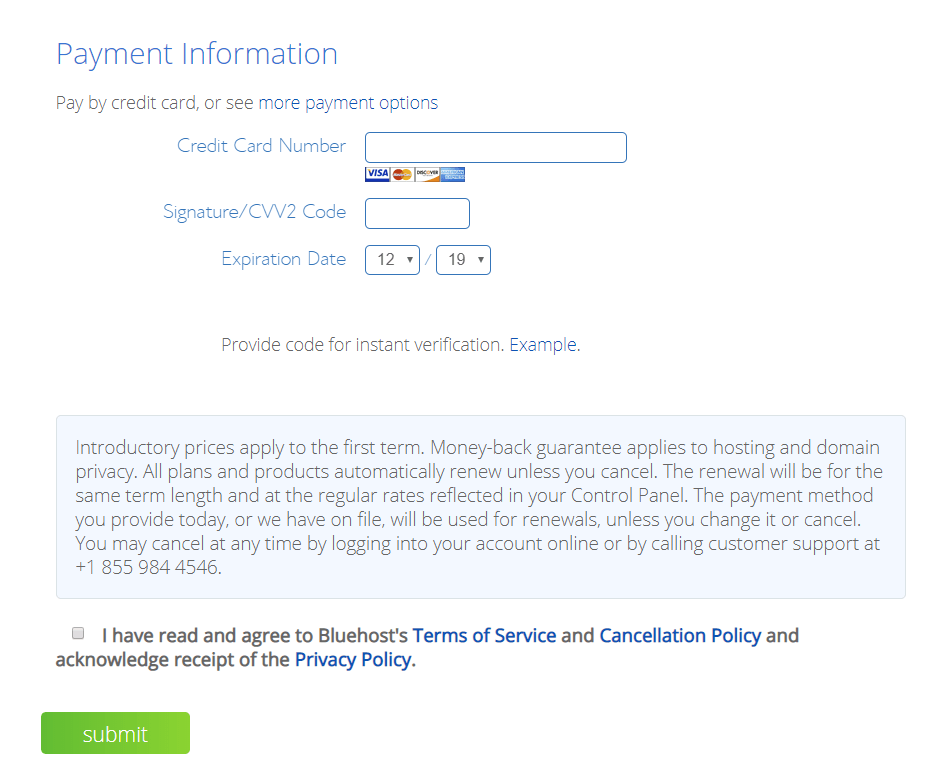
To finish your order, you need to agree with BlueHost’s terms of service by hitting the green Submit button.
Once you’ve done that, congrats! Your blog is now online and you learned how to start a sewing blog from scratch.
Click here if you haven’t started already.
The next step is to get your blog with a CMS (WordPress), and BlueHost makes this task really easier.
Disclosure: The Bluehost links above are affiliate links that will provide a small commission to me at no cost to you. These links only track your purchase and credit it to this website. Affiliate links are the primary way that I make money from my blog and that’s how you get this guide for free. BlueHost is the best web hosting option for new bloggers.
2. WordPress Installation
After the payment is complete, you need to pick a basic theme and start building. WordPress is awesome and I use it for all my sites, they have many features and the installation process is less than 1 minute.
After you had WordPress installed, you need to login to your dashboard, which you can do it by typing yourblogname.com/wp-admin.
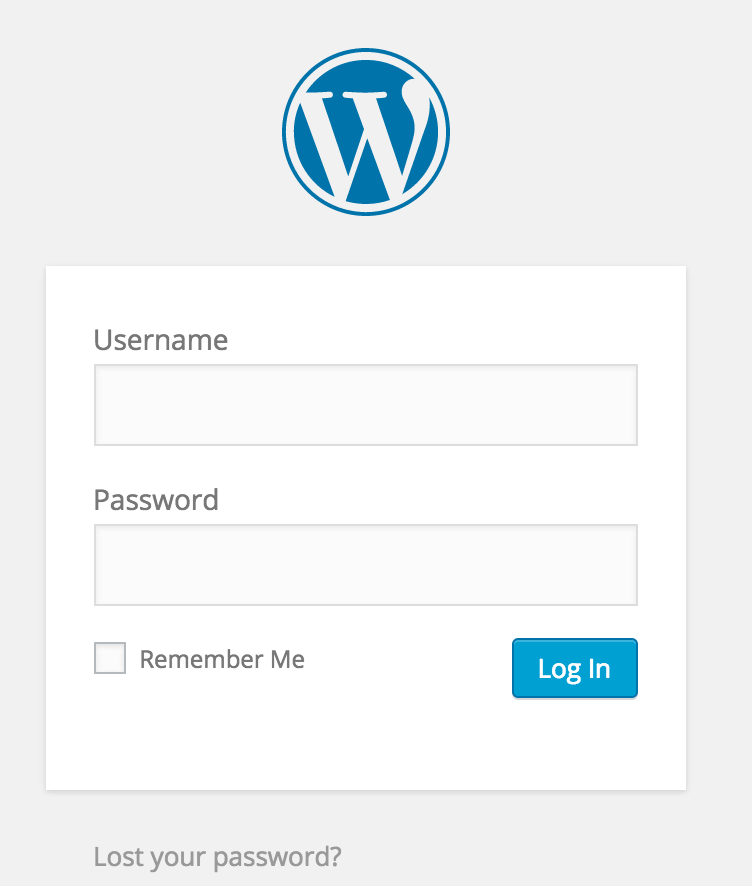
I highly recommend to all my readers to change their permalinks when they first start their blogs. You can head over to Settings then Permalinks and change them to Post name.
Why would you do this? Your URLs will be much shorter and user-friendlier. Navigation will be much easier for your blog visitors.

One example could be yourblog.com/blog-post is better than yourblog.com/2025/01/01/blog-post.
3. Install Theme and Plugins
Your blog needs to perform well so it needs to have a great theme and plugins that will be lightweight so your visitors can navigate faster. You can find the most popular thems in Appearance.
They are free to install, and some of them have PRO features.
But if you wanna take this more seriously, you can invest some money in a PRO theme from the start. I recommend the StudioPress WordPress themes, they are used by some of the most popular people and celebrities today.
Usually, a StudioPress theme could cost you around $25-250, they are always up-to-date, also fast, and secure. Click here to check them out.
Plugins
Plugins are crucial, you need to install some to help your blog to be optimized better for search engines. You can see below which plugins I installed, and how I got 0.6s loading time.
- Rank Math: On-Page SEO plugin.
- WP Fastest Cache: Cache plugin to clear cache and minify CSS and JS.
- Grow by Mediavine: It helps your readers to share your content.
- Block Bad Queries (BBQ): Malware stop.
- WP Forms: You can create a great contact form with this plugin.
- Autoptimize: Will speed up your blog.
- Self Hosted Google Fonts: This plugin will allow you to host Google Fonts locally.
- WP-Optimize: It will clean your database with old revisions and spam comments.
- WP-Rocket: Such a great plugin (PRO), and if you order it, you can avoid installing WP Fastest Cache, WP-Optimize, Autoptimize, Async JavaScript, CDN Provider, HeartBeat Control, and many more. You can check it out here.
Only the WP-Rocket plugin is paid, all of the above are free. Following these methods, I was able to get some crazy loading speed down below.
Check my results on GTMetrix:
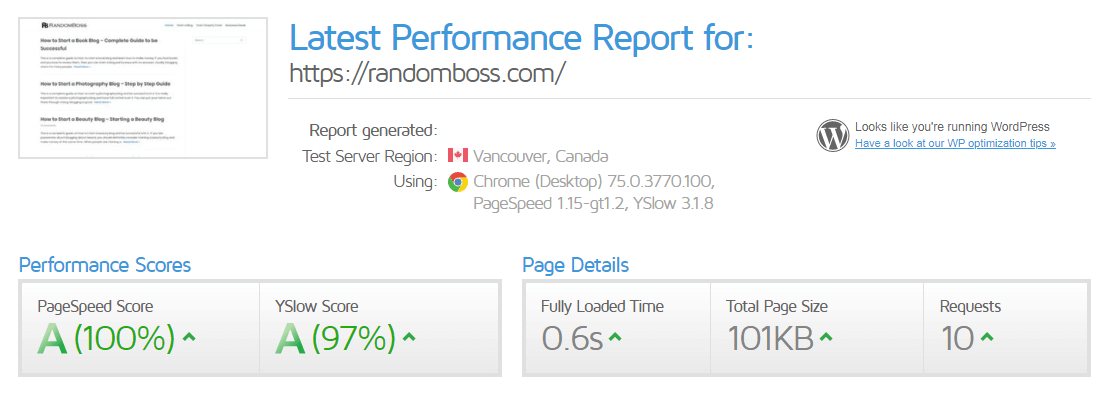
4. Adding Pages
You need to add some pages so your readers can know that they can trust your blog, and you don’t need to add plenty, you can add the following:
- About Page: If you wanna reveal yourself great, if not you can still say how you started in sewing and what was the motivation and what is your experience.
- Contact Page: People will wanna do some business with you, like collaboration or guest posting, or private ads, so it is great to have it.
- Copyright Page: If you value your content and want it protected, then explain on this page no one can use it without your permission. Install the WP Content Copy Protection plugin and will disable the right-click.
5. Writing your first post
The most important thing when you are first starting is to focus on content, to be consistent, and soon enough you will start visitors coming in.
Another very important thing is to write great headlines, you can check headline score here, just don’t make them clickbaity because it will result in high bounce rates.
For free-royalty images, you can use Unsplash and Pixabay.
To find topics that you wanna write content about, you can use SEMRush, a powerful tool to allow you to hunt low competition keywords.
Why should not you copy others?
It is very important to never steal someone else content, you are basically forcing Google to penalize your website. Always write great and original content.
You can see what your competition is doing, that’s fine, just don’t copy and paste from their blog to yours.
How should you represent your work?
Writing any blog is not only limited to writing the content on the page but there are many other ways through which you can catch the eye of the reader.
You can make any type of content based on images, videos, writings, visuals, and news content that depend on the type of content as well as the targeted audience.
The following are the different ways to represent your content. Select your favorite one from the below list.
Ever-green articles:
The first thing you can do is the ever-green article. They are defined by the name that these are the articles that never get old and people come to read them again and again of about every age.
In this type of article, you have to focus on the fundamental basis of sewing that remains the same with time. Even though there are now many new machinery and companies helping the people but the base remains the same.
Videos:
The next thing you can do is making the videos. Videos of which kind? If you know the different sewing techniques, then just make videos and upload them on YouTube then embed those videos on your blog.
Now you are thinking that you might need to buy an expensive camera and other equipment but you do not need to buy anything. The world has progressed very well so far, you can use your mobile phone and record videos.
You can make how-to videos that generally show how to make a different type of stuff at home. You have many topics for your videos. Do not worry about the quality of the video, you will be better with passing time, and the more you will practice.
News-type articles:
You can also make some new types of articles. You have to focus on two things when you are going to start this type of content.
First of all, you have to be stay active on every social site and every brand’s page because if you keep yourself updated, then you will be able to update your readers.
In this type of article, the content gets hype for about 2 or 3 days and after that, everyone forgets that. It will allow you to gather new readers and attract the people towards your blog.
The other thing you have to note that these types of articles tend to lose that hype and popularity as compared to the ever-green articles.
But, do not worry, there are always hundreds of news roaming in the sewing industry. You can tell people about the new fashion, new machines and new ways to sew clothes and new trends.
Mix all the content:
You can also mix all the content. It means that you can add images, write text, and make videos about any topic and upload all the on your blog, but in a sequence.
Just you have to motivate yourself to step out of your comfort zone and to do something extraordinary which the people like.
Stay motivated:
It is very important to stay motivated when you don’t see visitors coming in, you have to think positively and start promoting your content on your favorite social media.
Once you have a great number of articles, Google will start ranking you on low competition keywords and push you higher in the rankings for more competitive keywords as well.
How should to grow your audience?
Quantity over quality: Publish content consistently, and schedule it out and make a habit out of it. You will not be great at first, but once you have a grasp on what you are doing, you will see a huge improvement after your written couple blog posts.
Collaboration: Reach out to other bloggers and offer them one guest post, where you will create a 100% unique article so they can post it on their blog and you get one backlink in return.
Communication with the audience: Allow criticism and always engage with your visitors when they write you a comment on a blog post. They may help you get ideas on what they struggle with and how you can help them in your future blog posts.
Alright, it is time to write your first post, you can point at Posts, and click Add New.
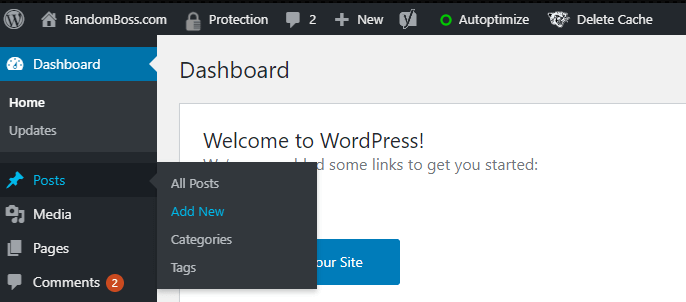
Once you finished your post, create a simple category. You can do that by clicking on +Add New Category, and then hit Publish!
Congrats on learning how to start a sewing blog successfully!
6. Monetizing
If you get visitors on your blog, you can help your visitors and earn some money as well. I will show you all the possible ways to get earnings from your blog and get affiliation with different brands and companies.
Display ads:
You can display ads on your websites and you will get money on the basis of per click. You can use Google AdSense to get approved and then display ads on your blog.
Displaying ads is the first step to earn your first dollar as many bloggers do.
After y0u get some visitors, you can switch to Ezoic or MediaVine, depend on how much traffic you get.
Affiliate Marketing:
You can also apply for any affiliate program with many top-notch companies and websites like Amazon. eBay, and many more. These will set a commission for you. You can choose many affiliation programs for your sewing blog as you can tell people about many sewing machines you use as well as other products.
All you have to do is to promote their products and if people buy from your link, you will get a commission, so it is a win-win situation.
Selling your own products:
You can sell your own products and make your own products once you get all the targeted audience. These are some ways through which you can make and sell your own work.
EBooks: You can make your own eBooks and sell them at very good rates. In this, you can add all the techniques and uses of machinery. You can make your own magazine featuring all the top fashions of the week or of the month.
Gated content: If you make content but you do not want it to be available for anyone that comes on your blog so you set it behind a ”paywall’. Through this, you can ask your followers and subscribers to sign up and charging them a very small fee at the start. Example: Patreon.
Online courses: You can also release your own courses when you interact and ask your audience. If you want to teach them and they have a lot of questions in their mind, then you can go to making an online course for them. You can sell your courses to your readers.
Bloggers can make up to $40 per 1000 visitors, so if your blog can get up to 50,000 visits a month, you can do the math. It is not impossible, you need to work hard and this level is achievable.
Promote your content on your favorite social media, you can create videos for youtube using ContentSamurai. Also, to hunt some low competition keywords, SEMRush is the best for bloggers.
How to start a Sewing Blog – Conclusion
- Pick the domain name
- Get Hosting (BlueHost)
- Install WordPress
- Install Theme and Plugins
- Add a few pages
- Add your first blog post
- Start Monetizing
- Congrats!
This is all that you should know about learning how to start a sewing blog. I’ve poured all my knowledge about blogging, and hopefully, this was helpful to you. You have to know that this is not an instant process and that it takes time.
You just have to be consistent and provide quality content to your readers.
You will find many people who will support you and your idea, you just have to start working and getting success is in your fate. Bring your ideas to reality!
Start a sewing blog today, and don’t be afraid to take baby steps. You will mistake but you will learn, which is the most important. Building something new is never easy, but it can be done and also very worth it.
Blogging is a great method to earn money online. You have all the benefits to work on your own time and schedule, so go ahead and start! For more tips on blogging, click here.